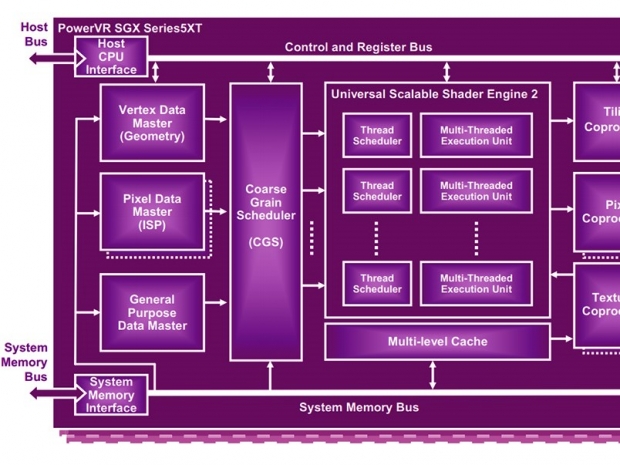Leanne Lee, Future Strategy Group Leader, Telechips, said: “We selected Imagination’s PowerVR Series9XTP GPUs for two reasons – PowerVR’s extensive history and experience in the automotive industry and its GPU virtualization capabilities. We needed a vendor that understood the unique challenges faced by the automotive market, and that offered a cost-efficient, flexible and futureproof solution, with the robustness needed for the target market. We found all of that in PowerVR and we look forward to collaborating with them on other automotive-focused projects in the future.”
The hardware virtualisation capabilities of the PowerVR architecture means it can host multiple operating systems (OS) using a single GPU core with no performance impact. Imagination’s virtualisation tech apparently meets the automotive’s industry reliability criteria.
The PowerVR architecture also offers the additional benefit of an extensive tool suite for debugging and tuning.
Nigel Leeder, Executive Vice President, PowerVR, Imagination, said: “GPU virtualisation is a must-have for automotive. GPUs that implement hardware virtualization can provide isolation between the various applications/OSs for increased security, as well as maximum utilisation of the underlying GPU hardware. We’re delighted to be working with Telechips on its next-generation SoCs and look forward to further future collaborations.”
PowerVR Series9XTP, based on the Furian architecture, is Imagination’s most recently announced GPU family. Key improvements over the previous generation include:
• Up to 50 per sent fps/mm2 density increase
• Extensive PPA optimisation throughout the design, including low-level architectural tuning
• ALU-width up to 40-wide per cluster for a significant increase in FLOP density
• Reduced bandwidth usage through PVRIC4 and micro-architectural cache tuning
• YUV sampling and filtering speed-up

